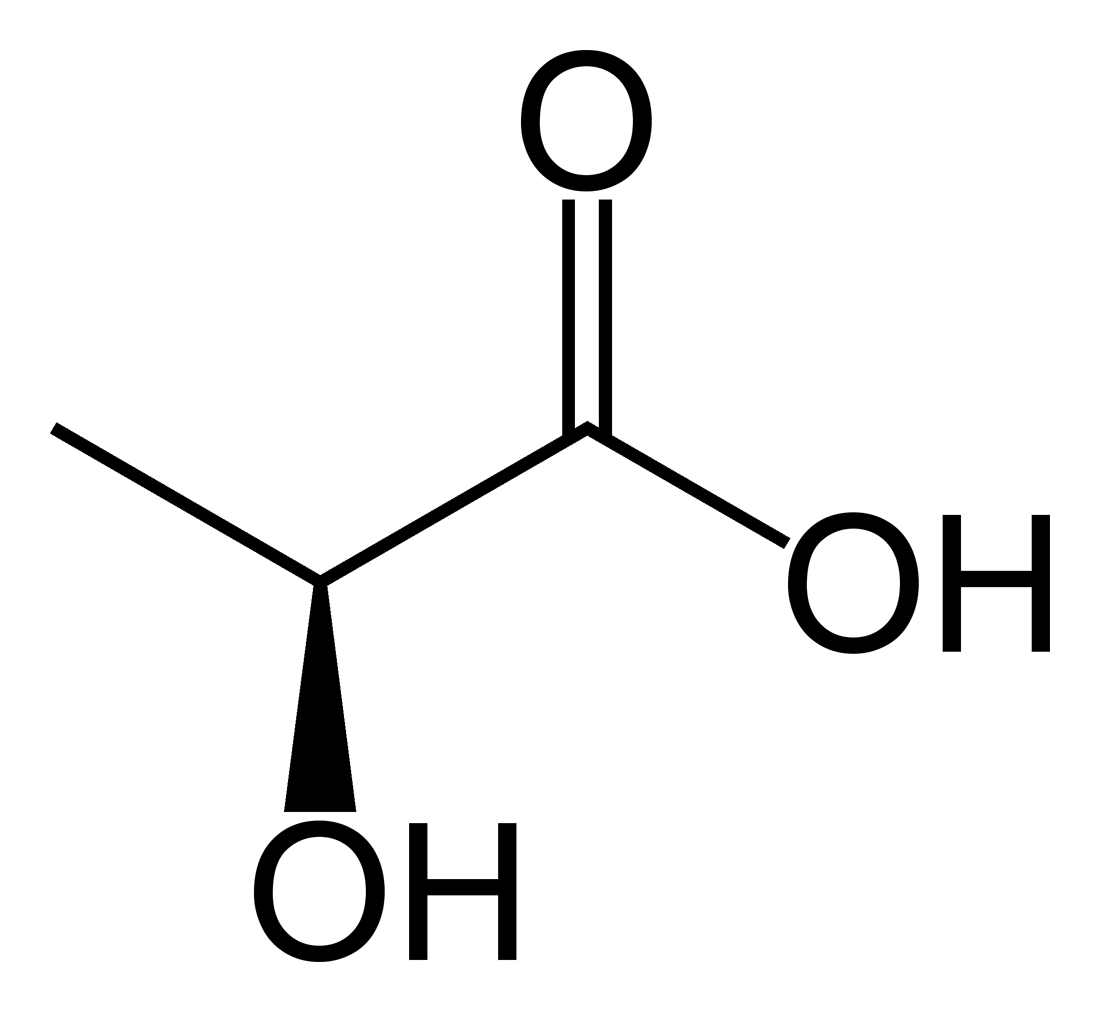Lactic acidosis
For patient information, click here
| Lactic acidosis | |
 | |
|---|---|
| Lactic acid |
Template:Lactic Acidosis Editor-In-Chief: C. Michael Gibson, M.S., M.D. [1]
Synonyms and keywords: Lactate levels raised (plasma or serum); lactic acidemia; lactic acidaemia.
Overview
Lactic acid is a carbohydrate and its levels rise with increased metabolism during exercise and with catecholamine stimulation. The excess of lactic acid in the body causes muscle pain, and occurs when oxygen levels in the body drop (hypoxia). Defined as serum lactate levels above 4mmol/L and a blood pH ≤7.35, the occurrence of Lactic acidosis LA) in type 2 diabetes specifically is of great concern because the mortality rate can be as high as 50%
Historical Perspective
Scherer was the first to record lactic acid in human blood in 1843. Subsequent work by Carl Folwarczny in 1858 built upon the understanding of the condition.
Classification
Lactic acidosis is classified into Type A (hypoxemic) and type B (due to underlying conditions or drugs).
Pathophysiology
A general idea about the development of lactic acidosis is that any mechanisms that increase production of, or decrease clearance of lactate lead to lactic acidosis.
Causes
Listed are most common causes of lactic acidosis, greater detail available here.
- Alcoholism
- Carbon monoxide poisoning
- Cyanide poisoning
- Exercise
- Grand mal seizure
- Hypoglycemia
- Hypoxemia
- Malignancy
- Metformin
Differentiating Lactic acidosis from other Diseases
The differentials include:
- Alcoholic ketoacidosis
- Anaemia
- Bacterial sepsis
- Distributive shock
- Hemorrhagic shock
- Bowel ischemia
- Severe alkalosis
- Inborn errors of metabolism
- Thiamine deficiency
- Pyruvate dehydrogenase deficiency
- Respiratory failure
- Septic shock
Epidemiology and Demographics
Lactic acidosis is a rare event, with an estimated incidence of 4.3 cases per 100,000 person-years in metformin users. The occurrence in type 2 diabetes is alarming as the mortality can be up to 50%. A secondary analysis of more than 41,000 person-years in type 2 diabetes showed that the incidence of LA in diabetic patients not exposed to metformin was between 9.7 and 16.7 per 100,000 person-years. Lactic acidosis often occurs in patients with acute severe asthma, most likely due to fatiguing respiratory muscles and subsequent inadequate oxygen delivery to the muscles and liver ischemia. Severe lactic acidosis also occurs in sedated mechanically ventilated patients without respiratory muscle activity.
Risk Factors
Risk factors include but are not limited to:
- Underlying sepsis
- Shock state
Natural History, Complications and Prognosis
Lactic acidosis may occur rapidly within minutes or gradually, over a period of days, depending on the underlying cause. Treating the cause of the metabolic disturbance relieves symptoms which are nonspecific, and may include disorientation, muscle pains, nausea, jaundice, shallow breathing or rapid heart rate. Common complications of lactic acidosis include arrythmias, loss of consciousness, organ failure and death. Benign causes, such as temporary elevations of lactate after exercise, are harmless, however, if it occurs as part of an underlying systemic disease, it can lead to significantly worse outcomes.
Diagnosis
History and Symptoms | Physical Examination | Laboratory Findings
Treatment
Medical Therapy | Primary Prevention | Secondary Prevention | Cost-Effectiveness of Therapy | Future or Investigational Therapies
Case Studies
Related Chapters
Additional Resources
- Clinical Physiology of Acid-Base and Electrolyte Disorders by Rose, Post
- Intensive Care Medicine by Irwin and Rippe
- The ICU Book by Marino
- Cohen R, Woods H. Clinical and Biochemical Aspects of Lactic Acidosis. Blackwell Scientific Publications; 1976. ISBN 0-632-09460-5.